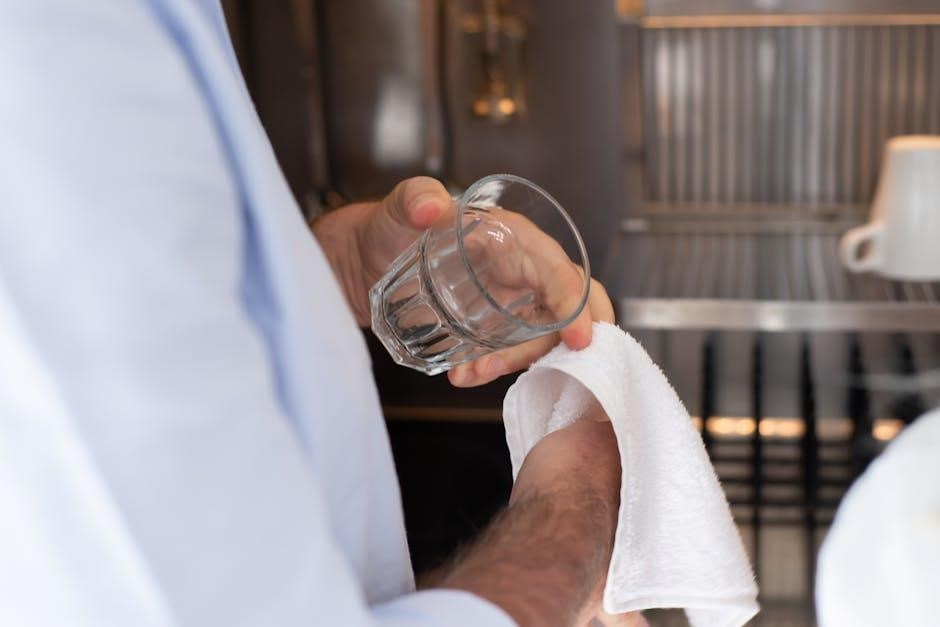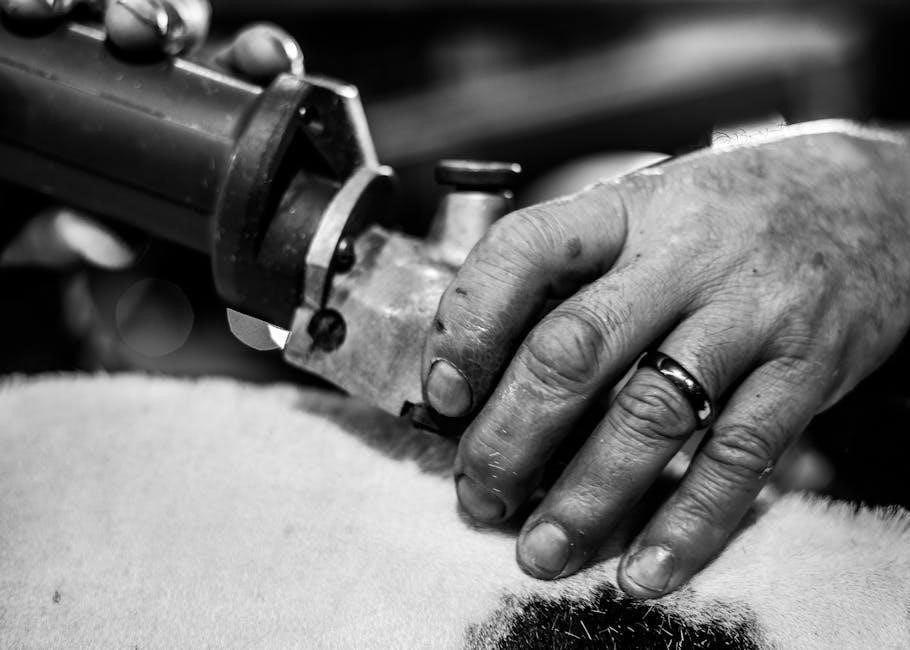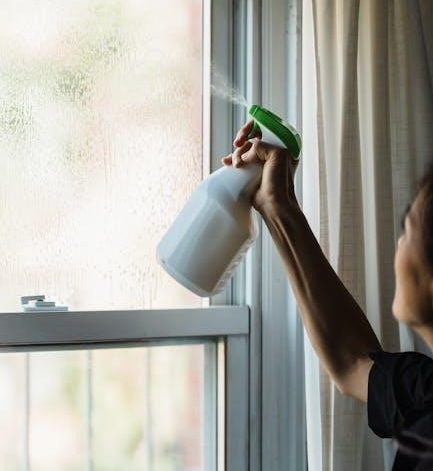Manual handling in care involves safely moving and supporting individuals who require assistance. It ensures resident comfort, reduces injury risks, and enhances caregiver efficiency using proper techniques and equipment.
1.1 Definition and Scope of Manual Handling in Care
Manual handling in care refers to the safe movement and support of individuals who require assistance due to physical limitations. It involves techniques and equipment to lift, transfer, or reposition residents, ensuring comfort and minimizing risks for both caregivers and residents. The scope includes activities like transferring from beds to wheelchairs, repositioning in chairs, and assisting with daily tasks. Proper manual handling is essential in all care settings, from residential facilities to home care, to prevent injuries and maintain dignity; It requires a combination of training, equipment, and risk assessments to address the unique needs of each individual effectively.
1;2 Importance of Manual Handling Equipment in Care Settings
Manual handling equipment is crucial in care settings as it enhances safety, comfort, and efficiency for both residents and caregivers. It reduces the risk of injuries from improper lifting techniques, promoting a safer environment. Equipment like hoists, slings, and transfer aids enable caregivers to assist residents with mobility challenges without strain. This not only protects caregivers from musculoskeletal disorders but also maintains residents’ dignity and comfort. Proper use of manual handling equipment ensures compliance with safety standards and regulations, making it an essential component of quality care delivery in residential and healthcare facilities. Its impact extends to improving overall care outcomes and resident well-being.
Types of Manual Handling Equipment
Common types include slings, hoists, transfer aids, wheelchairs, and bath hoists, each designed to safely assist with lifting, moving, and repositioning residents in care settings.
2.1 Slings and Hoists
Slings and hoists are essential for safe patient lifting and transfers. Slings are fabric loops placed under residents, used with hoists to lift and move them securely. Hoists, either mobile or ceiling-mounted, reduce manual effort, minimizing injury risks. They are versatile, catering to different mobility needs, and promote dignity and comfort during transfers. Proper training is crucial for safe operation, ensuring both resident and caregiver safety. These tools are vital in care settings, enhancing mobility and reducing strain during daily tasks like repositioning or bathing. Their use is fundamental to maintaining high standards of care and preventing musculoskeletal disorders among staff.
2.2 Transfer Aids (Boards, Belts, and Slide Sheets)
Transfer aids like boards, belts, and slide sheets are vital for safe and efficient patient moving. Transfer boards bridge gaps between surfaces, enabling smooth slides from beds to wheelchairs. Belts provide stability during transfers, while slide sheets reduce friction, preventing skin damage. These tools minimize manual effort, lowering injury risks for both residents and caregivers. They are easy to use and adapt to various care settings, ensuring dignity and comfort; Proper training is essential for effective use, making them indispensable in daily care routines to promote safety and ease of movement for individuals with limited mobility.
2.3 Wheelchairs and Mobility Aids
Wheelchairs and mobility aids are essential for supporting individuals with limited movement. They include manual and electric wheelchairs, designed for easy propulsion by users or caregivers. Lightweight models offer portability, while specialized chairs provide features like reclining or tilting for comfort. Mobility aids such as canes, walkers, and crutches assist with balance and walking. These tools promote independence, reduce the need for manual lifting, and enable smooth transitions between surfaces. They are versatile, catering to various care settings, and play a crucial role in enhancing resident mobility while minimizing strain on caregivers. Proper training ensures safe and effective use of these aids in daily care routines.
2.4 Bath and Ceiling Hoists
Bath and ceiling hoists are specialized manual handling tools designed to facilitate safe and dignified transfers in care settings. Bath hoists are motorized devices installed in bathrooms, enabling caregivers to gently lift and lower residents into bathtubs. They often feature adjustable height, angle, and width settings to accommodate individual needs. Ceiling hoists, mounted overhead, use tracks and slings to transfer residents between areas like beds and bathrooms. These hoists reduce manual effort, minimize strain, and enhance safety for both residents and caregivers. They are particularly beneficial for individuals with severe mobility limitations, providing independence and comfort while maintaining dignity during personal care routines.
The Role of Training in Manual Handling
Training is essential for safe and effective use of manual handling equipment, ensuring caregiver competency and promoting a safe environment for both staff and residents.
3.1 Essential Training Programs for Caregivers
Essential training programs for caregivers focus on safe manual handling techniques and equipment use. These programs include risk assessments, practical demonstrations, and hands-on sessions to ensure competency. Training covers proper lifting methods, equipment operation, and patient-centered care. It emphasizes preventing injuries and maintaining dignity. Regular updates on new equipment and regulatory changes are also provided. Compliance with safety standards is a key component. Effective training fosters confidence and skill, enabling caregivers to perform tasks safely and efficiently while protecting both themselves and residents from harm.
3.2 Proper Techniques for Using Manual Handling Equipment
Proper techniques for using manual handling equipment are crucial for ensuring safety and comfort. Caregivers should always assess the resident’s needs and select appropriate equipment. Equipment must be properly fitted and tested before use. Techniques include maintaining proper body mechanics, using slings or belts for support, and ensuring smooth transitions. Training programs emphasize following manufacturer guidelines and adhering to safety protocols. Proper use of hoists, slide sheets, and transfer aids minimizes strain and prevents injuries. Regular practice and updates on best practices are essential to maintain proficiency and adapt to new equipment or resident conditions. This ensures safe and effective care delivery.

Risk Assessment and Equipment Selection
Risk assessment identifies handling hazards, ensuring equipment selection matches resident needs. Proper evaluation enhances safety, reduces injury risks, and promotes efficient care delivery.
4.1 Conducting Risk Assessments for Safe Handling
Conducting risk assessments is crucial for ensuring safe manual handling practices. These assessments identify potential hazards, such as uneven surfaces or resident weight limits, and evaluate the physical capabilities of both caregivers and residents. By analyzing these factors, care providers can implement appropriate safety measures, like using specific equipment or adjusting lifting techniques. Regular updates to risk assessments ensure ongoing safety as resident needs or environmental conditions change. Proper documentation and communication of findings help maintain a safe and efficient care environment. This proactive approach minimizes the risk of injuries and enhances overall care quality.
4.2 Matching Equipment to Resident Needs
Matching manual handling equipment to resident needs is vital for safe and effective care. Proper assessments ensure the right tools are selected based on factors like mobility, weight, and specific requirements. For example, slings and hoists are chosen according to resident weight and support needs, while transfer boards or slide sheets may be better for shorter transfers. Equipment must also align with the caregiver’s ability to operate it safely. Regular reviews of resident conditions and equipment suitability ensure ongoing safety and comfort. This tailored approach enhances efficiency, reduces injury risks, and promotes dignity in care, while complying with safety standards and regulations. Proper matching is essential for optimal outcomes.

Regulations and Guidelines
Regulations and guidelines for manual handling in care are established to ensure safety, compliance, and proper training. They enforce equipment standards, minimizing risks and injuries effectively.
5.1 Overview of Relevant Regulations
Relevant regulations for manual handling in care emphasize safety and compliance. The Medicines and Healthcare Products Regulatory Agency (MHRA) oversees medical devices, including handling equipment. Guidelines stipulate weight limits for lifting, with maximums of 16kg for women and 25kg for men. Care homes must conduct risk assessments and provide adequate training on equipment use. Compliance ensures minimal risks, protecting both residents and caregivers. Regular updates to regulations reflect advancements in equipment design and safety standards; Proper adherence to these guidelines fosters a safe, efficient, and dignified care environment, aligning with legal and ethical standards in healthcare.
5.2 Compliance with Safety Standards
Compliance with safety standards is crucial for ensuring the safe use of manual handling equipment in care settings. Equipment must meet regulatory requirements, such as those set by the Medicines and Healthcare Products Regulatory Agency (MHRA), which oversees medical devices. Regular inspections and maintenance of equipment are essential to guarantee functionality and safety. Training programs must align with safety standards, emphasizing proper techniques and equipment use. Adherence to these standards minimizes risks of injury to both residents and caregivers, fostering a safe and efficient care environment; Proper compliance also ensures equipment is used in accordance with manufacturer guidelines, promoting optimal performance and reliability.

The Impact of Manual Handling Equipment
The use of manual handling equipment significantly enhances care quality by reducing physical strain, preventing injuries, and promoting efficient, safe transfers, benefiting both residents and caregivers.

6;1 Enhancing Resident Safety and Comfort
Manual handling equipment plays a vital role in enhancing resident safety and comfort by minimizing the risk of injuries during transfers and repositioning. Equipment such as slings, hoists, and transfer aids ensure smooth and controlled movements, reducing physical strain and discomfort. Properly designed equipment promotes dignity and independence for residents, allowing them to maintain their mobility with confidence. Additionally, these tools help prevent skin damage and pressure sores, which are common concerns in care settings. By incorporating the right equipment, caregivers can create a safer, more comfortable environment, fostering well-being and quality of life for residents.
6.2 Reducing Caregiver Injuries and Strain
Manual handling equipment significantly reduces caregiver injuries and strain by minimizing physical exertion during lifting and transferring tasks. Properly designed equipment, such as hoists and transfer aids, distributes the weight evenly, lowering the risk of musculoskeletal disorders. By eliminating the need for manual lifting, these tools protect caregivers from potential harm. Additionally, training on equipment usage ensures safe techniques, further reducing injury risks. This not only enhances caregiver well-being but also maintains a consistent and reliable workforce, ultimately benefiting both staff and residents in care settings.




